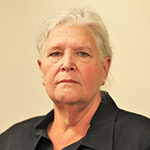QC leaders laud passenger rail funds; warn work remains
Kenda Burrows
Laborshed studies, like the most recent one for the Quad Cities region, are not just a great tool for communities seeking to grow their population and tax bases.
The Iowa Workforce Development (IWD) analysts who produce them say the data they collect are important resources for governments, developers and employers seeking to grow their workforce.
“Laborshed studies are often used by economic development organizations,…

Get immediate, unlimited access to all subscriber content and much more.
Learn more in our subscriber FAQ.
Do you want to read and share this article without a paywall?
